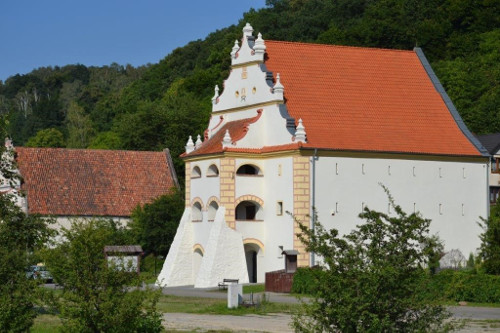In the XVI and XVII centuries Kazimierz Dolny enjoyed a time of wealth and prosperity. Local burghers who profited from the river trade route built beautiful townhouses and founded new churches. They also erected impressive granaries for storing grain; the greatest of them were located in Puławska Street and Krakowska Street. Altogether about 60 granaries were built, but only a few have remained till present day.
The gables of the granaries, which were slender, triangular and crowned with pinnacles, were modelled on the design of the Kazimierz parish church, which led to an introduction of features of the Lublin Renaissance to secular architecture.
In the XIX century run-down granaries were adapted for different purposes. After a series of restoration works in the XX century, some of which was done according to a design by Karol Siciński, the Kobiałka Granary was transformed into a tourist hostel, while the Ulanowski Granary (earlier owned by the Przybyła family) became a branch of the Nadwiślańskie Museum – the Nature Museum. Traces of the Lublin Renaissance are also noticeable in the architectural style of the Feuerstein Granary, which used to function as a tannery.




